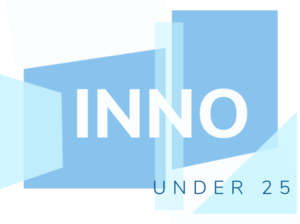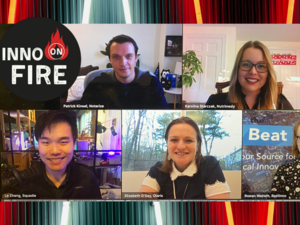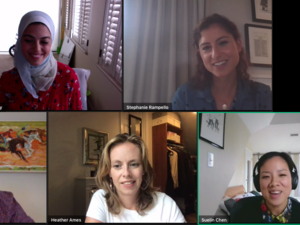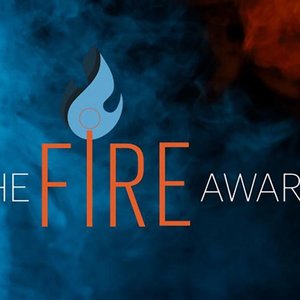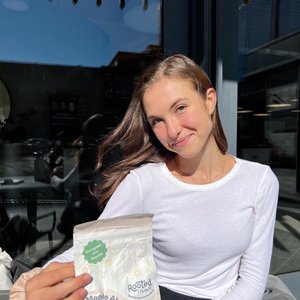As our 2017 Tech Madness Competition is only a week away, I have an exclusive tip for the finalists: BostInno readers love an unconventional style business. Just take a look at last year’s Tech Madness winner, Cengage Learning. The company has spent years in the edtech industry, and it is currently in the transitionary period between textbook and digital platforms. In November, the company dropped "Learning" and rebranded as “Cengage”. This move was made to fit in with its sweet and streamlined accessibility for students around the globe.
Last year, our readers decided that Cengage would rise above the rest of the tech scene and were crowned as 2016 Tech Madness champs– beating out 63 others. Here are some fast facts to capture their most recent growth, courtesy of the Cengage team and CEO Michael Hansen.
International Expansion: The company has always had international reach, currently in 125 countries explained Hansen. However, he hinted that there has been more growth as the trend toward digital education continues. For example, Cengage is number 1 in market share for the Australian higher-ed market, and local versions of MindTap are being created to meet student demands.
Staff: Over the course of FY 17, Cengage’s U.S. headcount grew by 7%. The product and tech headcount grew by 13%. There are currently 60 open spots on the technology side in Boston.
Product Growth: The company saw strong growth in their digital courseware with a 10% increase over last year in student activations during the first 3 quarters of FY 17.
Standalone digital sales are up 16% year-to-date. Also, MindTap, the company’s flagship digital learning platform, grew almost 38% year-over-year in terms of units and revenue.
Earnings: According to their most recent fiscal report, Cengage’s revenue is actually down from last year. In their Q3 earnings call, they reported that their YTD Adjusted Revenue is $1,179 million. Michael explained that the transition of Cengage into a more digital platform, is part of the reason behind this stat. Check out our interview below for more context.
Impressed? I caught up with Michael over the phone to hear how the tech leader is transitioning and growing at the same time.
Natasha Mascarenhas: What would you say the major drivers behind the growth for Cengage were within this past fiscal year?
Michael Hansen: I want to come back to the discussion...we had with BostInno about a year ago. During the time, I said very clearly that the path that we’re on, is that we are aggressively cannibalizing our traditional print textbook model, the print textbooks that we all use at some point in our lives. Aggressively cannibalize it to replace it, with a better learning experience in our digital platforms. And that strategy, in the the bottom line, is working. In other words we are step by step growing the digital platforms that we have — and we are seeing a corresponding decline in the traditional print textbooks sales.
When it comes to the growth of digital, our focus has been from day one, when we started to design our digital solutions, really been on the workflow of the students.
NM: You guys acquired WebAssign, can you tell me a little more about that? What drove that decision and what you guys hope to get out of it?
MH: Our focus has been on building a STEM platform. Now we had originally done this in this collaboration with WebAssign where we essentially licensed our platform and put our content on their platform. Over time, it is something where I felt strongly that we actually needed to own the platform and not just have an arms-length licensing relationship. And that really drove the decision to acquire WebAssign.
There was another reason though, that was probably not as obvious from the coverage that was made in the media about this. WebAssign had spotted another very interesting collaboration with OpenStax, which is a provider of open educational resources. They basically go out and curate resources that are available for free on the internet. They have developed a product together with OpenStax and that was something that we see is a significant opportunity for us as well. Because we believe that open educational resources are a part of the landscape in education right, and for some it’s actually very appropriate to have open educational resources as part of the digital solution.
NM: Why do you feel you saw that transition [in terms of a decrease of revenue]?
MH: In terms of revenue what you see play out is exactly what I described at the top of this discussion, which is our print revenue is shrinking very persistent and relatively fast, and our digital revenue is only gradually starting to offset the print revenue decline. Plus, the fact that we are making our products more affordable that obviously also has a dampening effect on revenue. We are in the middle of that transition, but clearly, the print revenue decline has kind of had a bigger effect, but we’re still seeing very strong digital growth.
The road that we’re on is exactly the same road.
NM: Just bringing it back, do you feel like you guys have been able to cannibalize the textbook industry to drive digital production?
MH: Look I mean, this journey is not for the faint of heart, Natasha. When you cannibalize your own revenue, you are clearly running certain risks. The business model was a nice stable and highly profitable business model and now you are attacking that business model yourself and replacing it with digital revenue. As I said, it is not without risks. But we believe that the principal metrics that we look at is what is the revenue growth, and the revenue growth in digital continues to be extremely strong. And then on the print decline, you can’t really steer that - is it going to be 10% one year, or 12% the other year. You are actually subject to a lot of market forces that you don’t control. It is not a straight line, it is not an easy journey, but we believe in the interest of a better experience for the students and ultimately a better outcome in the education system, we absolutely need to stay on that journey. And that’s what we do, and so far it’s working as we expect it.
Want to see if Cengage will make the final 64 Tech Madness Bracket? Grab your tickets to our Tech Madness Bracket Reveal Blowout on March 21st at Game On! Fenway. We'll be there with bites, brews, games, access to the Red Sox batting cages, and premier networking with some of the best in Boston Tech.
Editorial Note: In the interview, OpenStax is referred to as an organization that curates resources for free on the the internet. However, as per an email by Dani Nicholson, the director of marketing and communications at OpenStax, the company does not curate resources, but instead uses funding from foundations to hire educators and experts to write our textbooks. The books are then available for free and OpenStax partners with organizations like WebAssign, which provide OpenStax with a mission support fee from additional services.
Thank you to our Tech Madness Sponsors. Want to align your brand with BostInno events? Contact us at sales@americaninno.com/boston!
